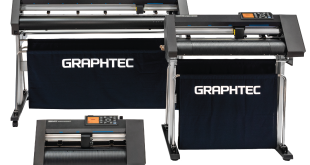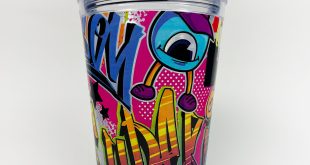
Have you ever wondered when you can label your products as made in the UK? Kate Hills, founder of Make it British, outlines the hows, the whys and the whens.
As the founder of Make it British and Make it British Live!, Kate Hills has taken a keen interest in what can and can’t be labelled as made in the UK.
To begin with you need to establish where your product originates. Firstly, there are two main categories of origin in the rules as set out in European Union guidelines. The first being ‘goods wholly obtained or produced in a single country’ and secondly ‘goods whose production involved materials from more than one country’. The guidelines add that if some of the components are manufactured in the EU but components are added and the product is assembled in another country it may be judged that the product originates from the country where it is assembled.
To illustrate the difference between the two categories, take for example a traditional Fair Isle jumper. If it uses wool that has come from a British sheep, yarn that has been spun in Yorkshire and that yarn is knitted into a jumper in Scotland, then this product is wholly produced in the UK.
To highlight the second category of a product involving more than one country during the production process, take for example a simple printed dress. Perhaps the cotton is grown, spun and woven in India, then this fabric is taken to Turkey where it is dyed and then printed, before being transported to London where it is then stitched in a factory. This product has not been wholly produced in the UK, but surprisingly this product can be labelled as made in the UK. The reasons why will be explained later.
Rules of origin
The World Trade Organisation’s stance on the rules of origin is as follows: “Rules of origin are the criteria needed to determine the national source of the product. There is wide variation in the practice of governments with regard to the rules of origin. While the requirement of substantial transformation is universally recognised, some governments apply the criterion of change of tariff classification, others the ad valorem percentage criterion and yet others the criterion of manufacturing or processing operation.” Which according to Kate is quite a vague attitude towards the rules of origin.
So, what does the EU say about rules of origin? As the UK is still within the EU at present, these are the rules that manufacturers within the UK follow. The EU’s product classification has three main criteria; the first being the ‘value added’ rule, the second being the ‘specific operations’ rule and the third being the ‘change of tariff classification’. If your product fits one of them, then that defines where your country of origin is.
Value added is understood to be the ex-works price minus the customs value of each of the materials incorporated which originate in the other countries. Put simply it takes the cost of the materials that you import and then how much value you add on them in the UK. Generally, this is seen as about 40-50%, so you need to add on at least half of the value in the country that you want to label the products as.
The specific origins rule generally dictates specific production processes that may confer originating status to the goods. The ceramics industry in the UK is a really good example of this. A while ago a rule was passed to protect the ceramics industry in Stoke in particular. To be able to label ceramics as made in the UK the first firing had to be done in Stoke-on-Trent. This is what is known as a specific production process. Unfortunately, Kate says that it is not this simple with other product types.
The final rule, change of tariff classification, refers to when a product is ‘substantially changed’ to the point that it requires a different classification. Of the three methods this is generally the one used when exporting or importing goods. One of the clearest examples of this is raw material versus finished product. If you take leather for example, when you turn this leather into a bag its product classification then becomes a leather bag because it has a different end use. Before it is the skin of a cow, afterwards it is something used to carry items. But Kate warns, it is not always this simple.

Substantial changes
To understand further understand product classification and what counts as a substantial change to a product, many manufacturers in the UK follow the Trading Standards Act 1968, which states that goods shall be deemed to have been manufactured or produced in the country in which they last underwent a treatment or process resulting in substantial change. Until there is a new law or a new act, this is the one that is adhered to.
An example of this is a hi-top van. Even if the company is not British-owned and the parts are imported from overseas, as long as the van is assembled in the UK and sprayed and finished in the UK, it can be labelled as made in the UK. This is because the last substantial change took place in the UK. However, a printed mug where the clay comes from overseas and the first firing is done overseas, even if the transfer is applied in the UK, this cannot be labelled as made in the UK as the last substantial change happened overseas.
Kate says that the example that she most gets asked about and which is particularly relevant to the printwear market is the printed T shirt. When can a printed T shirt be labelled as made in the UK? If the fabric is knitted overseas and the cloth is cut and stitched in China, even though the T shirt has been printed and the label has been sewn on in the UK, this T shirt cannot be labelled as made in the UK. This is because the substantial change took place in China.
The main question to ask yourself before establishing if you can label your product as made in the UK is ‘did my product have the same end use before this process was carried out?’. By following the rules of origin, you won’t go far wrong.
- This content has been taken from a podcast hosted by Kate Hills, founder of Make it British. To listen to the podcast in full visit makeitbritish.co.uk
 Printwear & Promotion The Total Promotional Package
Printwear & Promotion The Total Promotional Package




